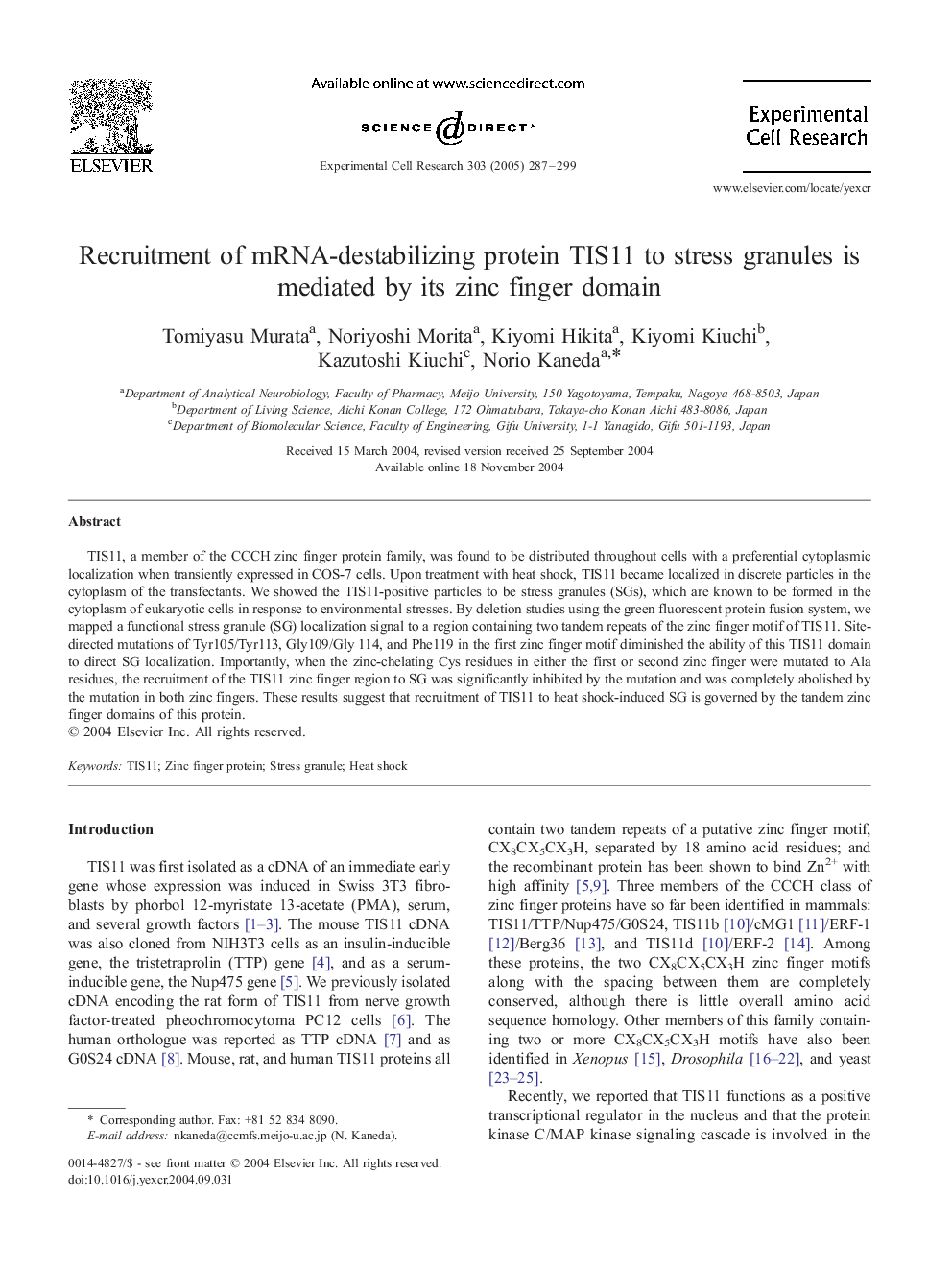| Article ID | Journal | Published Year | Pages | File Type |
|---|---|---|---|---|
| 10905751 | Experimental Cell Research | 2005 | 13 Pages |
Abstract
TIS11, a member of the CCCH zinc finger protein family, was found to be distributed throughout cells with a preferential cytoplasmic localization when transiently expressed in COS-7 cells. Upon treatment with heat shock, TIS11 became localized in discrete particles in the cytoplasm of the transfectants. We showed the TIS11-positive particles to be stress granules (SGs), which are known to be formed in the cytoplasm of eukaryotic cells in response to environmental stresses. By deletion studies using the green fluorescent protein fusion system, we mapped a functional stress granule (SG) localization signal to a region containing two tandem repeats of the zinc finger motif of TIS11. Site-directed mutations of Tyr105/Tyr113, Gly109/Gly 114, and Phe119 in the first zinc finger motif diminished the ability of this TIS11 domain to direct SG localization. Importantly, when the zinc-chelating Cys residues in either the first or second zinc finger were mutated to Ala residues, the recruitment of the TIS11 zinc finger region to SG was significantly inhibited by the mutation and was completely abolished by the mutation in both zinc fingers. These results suggest that recruitment of TIS11 to heat shock-induced SG is governed by the tandem zinc finger domains of this protein.
Related Topics
Life Sciences
Biochemistry, Genetics and Molecular Biology
Cancer Research
Authors
Tomiyasu Murata, Noriyoshi Morita, Kiyomi Hikita, Kiyomi Kiuchi, Kazutoshi Kiuchi, Norio Kaneda,
